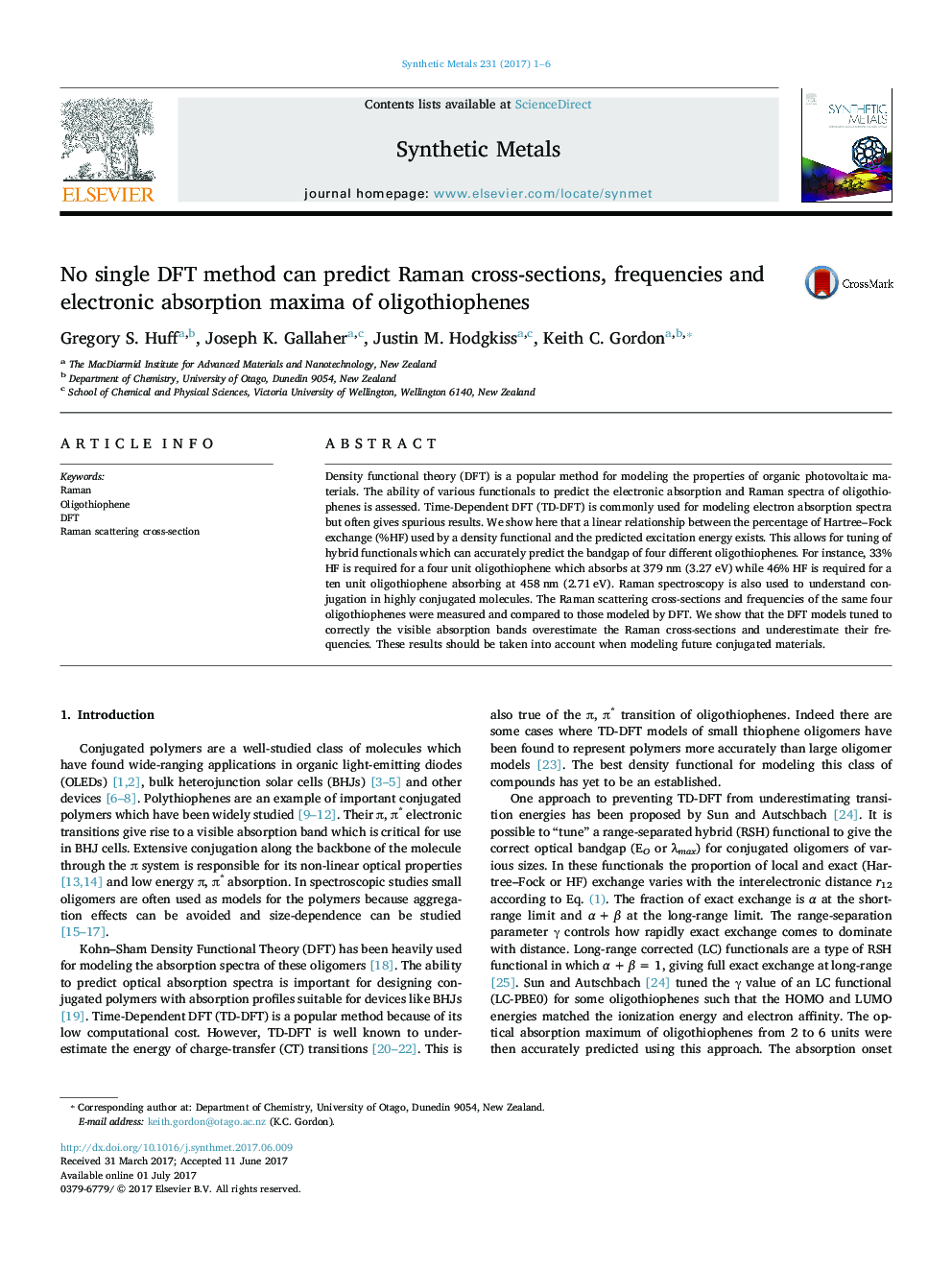| Article ID | Journal | Published Year | Pages | File Type |
|---|---|---|---|---|
| 5435356 | Synthetic Metals | 2017 | 6 Pages |
â¢Raman cross-sections of four to ten unit oligothiophenes measured.â¢Several common DFT methods used to model Raman and UV/vis spectra.â¢TD-DFT results can be easily corrected by adjusting amount of Hartee-Fock exchange.â¢This does not improve modeling of Raman spectra and is not predictive.
Density functional theory (DFT) is a popular method for modeling the properties of organic photovoltaic materials. The ability of various functionals to predict the electronic absorption and Raman spectra of oligothiophenes is assessed. Time-Dependent DFT (TD-DFT) is commonly used for modeling electron absorption spectra but often gives spurious results. We show here that a linear relationship between the percentage of Hartree-Fock exchange (%HF) used by a density functional and the predicted excitation energy exists. This allows for tuning of hybrid functionals which can accurately predict the bandgap of four different oligothiophenes. For instance, 33% HF is required for a four unit oligothiophene which absorbs at 379Â nm (3.27Â eV) while 46% HF is required for a ten unit oligothiophene absorbing at 458Â nm (2.71Â eV). Raman spectroscopy is also used to understand conjugation in highly conjugated molecules. The Raman scattering cross-sections and frequencies of the same four oligothiophenes were measured and compared to those modeled by DFT. We show that the DFT models tuned to correctly the visible absorption bands overestimate the Raman cross-sections and underestimate their frequencies. These results should be taken into account when modeling future conjugated materials.
Graphical abstractDownload high-res image (200KB)Download full-size image
